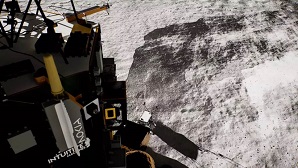Nokia Bell Labs is deploying the first cellular network on the Moon to demonstrate that cellular technologies can provide the critical communications needs for future lunar or Martian missions.
For the first time, we are digging into the details of our lunar mission in a new article on Nokia offcial website. We explain our reasons for voyaging to the Moon, explore the possible applications for cellular communications in lunar and Mars exploration, and describe the upcoming mission from launch to conclusion.
Why Nokia is going to the Moon
Nokia wants to prove that cellular technologies can provide the reliable, high-capacity and efficient connectivity needed for future crewed and uncrewed missions to the Moon and other planets. For any sustained human presence on the Moon and on Mars in the future, connectivity and communications are critical.
We feel the best way to do this isn’t by inventing an entirely new communications platform for planetary exploration. Rather, we should take advantage of the same technologies that connect billions of phones and devices here on Earth.
The IM-2 mission from launch to conclusion
The mission, which is called IM-2, will launch from NASA’s Kennedy Space Center at Cape Canaveral, Fla. A SpaceX Falcon 9 rocket will ferry the Nova-C lander into space on a direct trajectory to the Moon. After a five-day journey, the Nova-C lander will descend to the lunar surface. The targeted landing zone is Shackleton Connecting Ridge at the Moon’s south pole.
Once on the lunar surface, the Nova-C lander will automatically deploy our 4G/LTE network. Then two vehicles will be deployed both of which will link directly to the Nokia network.
The first vehicle will be the Lunar Outpost’s Mobile Autonomous Prospecting Platform (MAPP) rover. It will then begin a multi-day journey exploring the Shackleton Connecting Ridge. The rover will autonomously map the lunar surface while collecting stereo imagery and thermal data along the way. Most significantly, MAPP will collect samples of lunar regolith in a special bin mounted on the rover’s wheels. Images of this material, the first ever collected from the Moon’s south pole, will be sent back to NASA for analysis.
The second vehicle will be the Intuitive Machines Micro-Nova hopper. The Micro-Nova will fire hydrazine rockets in controlled bursts to propel itself short distances. In short, it will “hop” from place to place, accessing areas other vehicles can’t reach. The main task of the Micro-Nova is to search for lunar ice deep within a lunar crater. One expected component of that ice is water, which would be critical to any future crewed mission to the Moon.
The trove of data collected on IM-2 will give us a wealth of knowledge about a key area of the Moon, helping pave the way for future crewed Artemis missions. Discovering water at the Shackleton Connecting Ridge would set the stage for a permanent habitat at the Moon’s south pole, as water ice could be converted to breathable oxygen and even used to create fuel for an eventual journey to Mars.
How the lunar mission relates to Nokia’s business
With its Tipping Point initiative, NASA is fostering a new era of public-private partnerships, shepherding the development of critical space technologies. The technologies that emerge from Tipping Point could be used in Artemis missions, which will establish sustainable operations on the Moon in preparation for future crewed expeditions to Mars. This presents many opportunities for Nokia and other Tipping Point companies to participate in the future space economy.
Just as communications and networks are a vital part of the economy on Earth, they will be a vital element in any future lunar or Martian economy. Cellular networks would support habitat infrastructure and mission goals by linking sensors and connecting transport vehicles, scientific payloads, exploratory drones and rovers.
Connectivity will play a major role in the lunar or Martian internet in the future. One day astronauts may even be able to take their smartphones to space, using them in a Moon or Mars habitat the same way they would use them on Earth.
We will also gain knowledge we can utilize right here on Earth. The Moon’s surface is one of the most inhospitable environments we have ever encountered. If Nokia can build a network that can function on the Moon, we can build a network that can function in the most extreme environments on Earth.
SOURCE – Nokia offcial website
